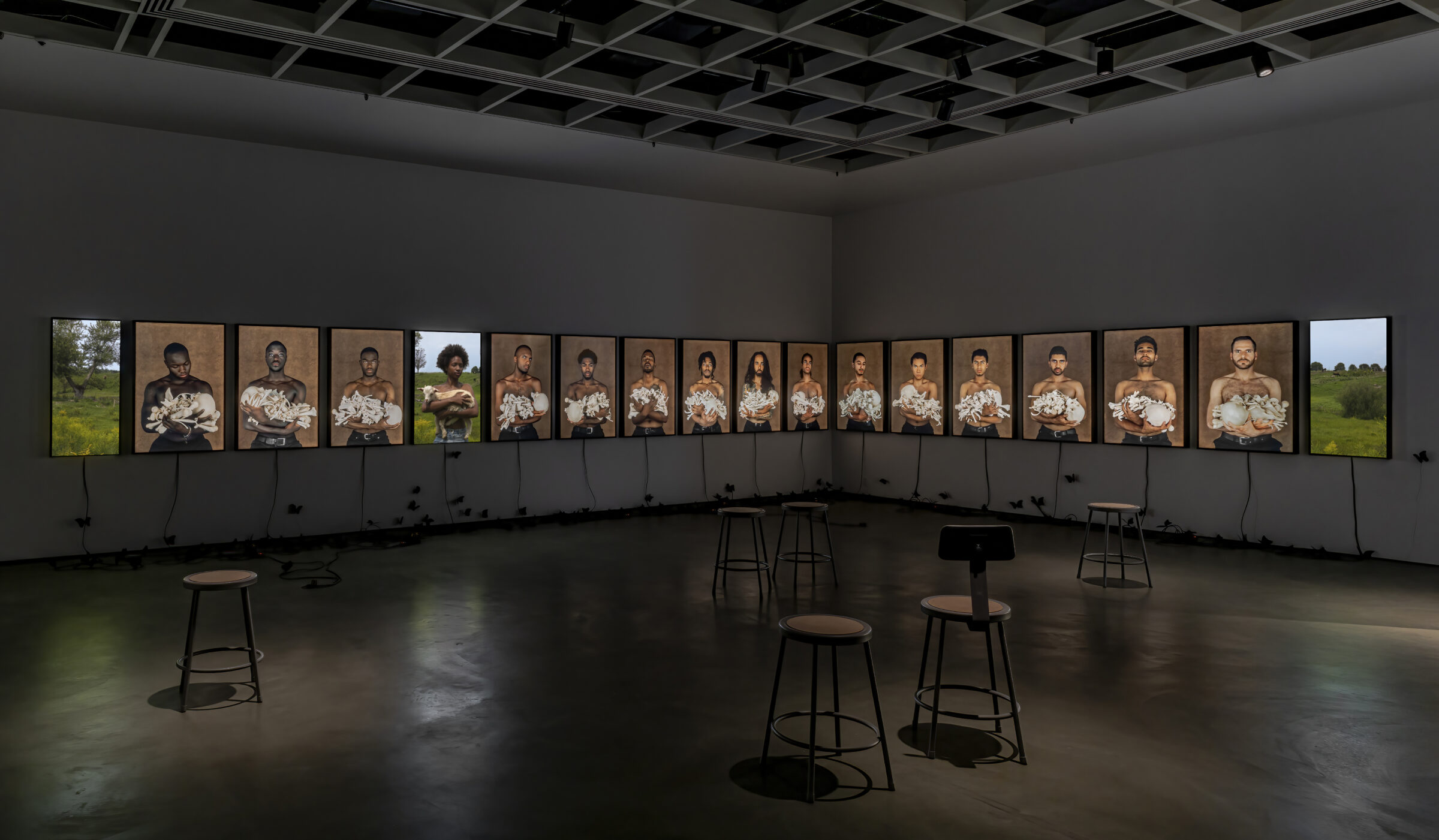
Pushing Against the Stream: Q&A with Artist
nichola feldman-kiss
March 16, 2022
This interview took place between exhibiting artist nichola feldman-kiss and McMaster student and M(M)A curatorial mentee Adeola Egbeyemi who discussed the current exhibition Scapegoat, from influences to themes and context.
A: Can you speak about your artistic process behind the work being presented in Scapegoat? Was anything different from previous processes in your career?
n: Well actually this is the first project that I have ever made that I stopped working on for some time because I felt it wasn’t good for me. I was over-identifying with it, digging deeper and deeper into the systemic racism which I was experiencing. It’s not something I have talked about publicly, but it alluded to personal challenges happening at the time. I was basically being dragged through a horrible family court litigation by an ex-husband, who is a litigator. It was through the litigation process that the shocking systemic bias of our legal system became revealed to me. It was very confusing, because part of my confusion was that I was surprised by it. All this history of generational trauma both abstract and lived, had been the story of my work…I realized I had preferred to keep my head in the sand as a strategy for coping in this society. When this occurred to me, I could no longer. I am just beginning to be able to talk about this experience as part of the context for creating Scapegoat and other works from my project A slight aversion to the plight of the sufferer (Pietà) that began in 2015.
A: That makes a lot of sense to me. And I want to say thank you for sharing that, it adds another layer for me. How did that experience impact how you hope for audiences to enter into this exhibition or come away from it?
n: I don’t make my work in consideration of the audience. My work is more of an excretion. The thing that I do, is that I take in and take in then distill it as art and poetry. I really don’t think I have a whole lot of control over it.
A: I wanted to ask you about geopolitics in your work. In 2011, you spent time in the Sudans as part of the Canadian Forces Artist Program. Sudan and South Sudan are such young countries and geographically they’re located at a basin, where the Nile River will flow into it, so they’ve got really fertile irrigation and land.
n: Funny that; yet there is famine.
A: In many African nations—my parents are Nigerian immigrants—there are the contrasts between the vast richness and resources of these lands—and the people as well and their ability to hustle and their ability to…
n: Survive.
A: Yes! And to create, and navigate, and push forward. Contrasted with the anti-blackness and all the “isms” of the world.
n: And also there is joy. The joy of a culture in radical presence –in full-on aliveness.
A: In the curators’ statement, the exhibition is described as having taken on a new meaning “…as the world lurches from one global catastrophe to another.” Within the past two years, it’s hard to count so many catastrophes. A big one has been the global climate crisis and the different protest movements with a lot of youth today and the more recent conflict in Ukraine. I was wondering how your work might affect societal issues because I know that art has the potential to renew and change individuals as they experience it. I was wondering if you had any thoughts on how Scapegoat might do that?
n: Well, when I was a student at University of Ottawa, the teaching of the time was that art did not have the capacity to change society. I came into art school thinking I was going to be a photojournalist. But in order to take the photo courses I wanted, I needed to be a fine art major because studios were reserved for fine art students and I said, “Okay. Tell me what I need to do to become a fine arts major.” Next day, done. I was a fine art student. I had been president of the Student Association of the Faculty of Arts and occupied leadership positions at the Ontario and Canada Federation of Students. So as an art student, I was very politicized. I arrived politicized. Art school became that place where I could exercise my feisty, opinionated self, much more than anywhere else in the university, so I just fell in love with that place.
I worked actively in my university, in support of the South African anti-apartheid movement to promote divestment. I had a dream to go to South Africa because I thought the country could teach me something about how my own complicated identity fits within a polarized society. I was a big fan of the artist Alfredo Jaar. He had the courage to go to the Rwanda genocide and say “Look!” He actively sought to show the effects of the genocide to the art community. For me, it’s not a choice to make work about equity, inequality and injustice, and to pull people’s eyelids back. At a certain point, it became a matter of urgency.
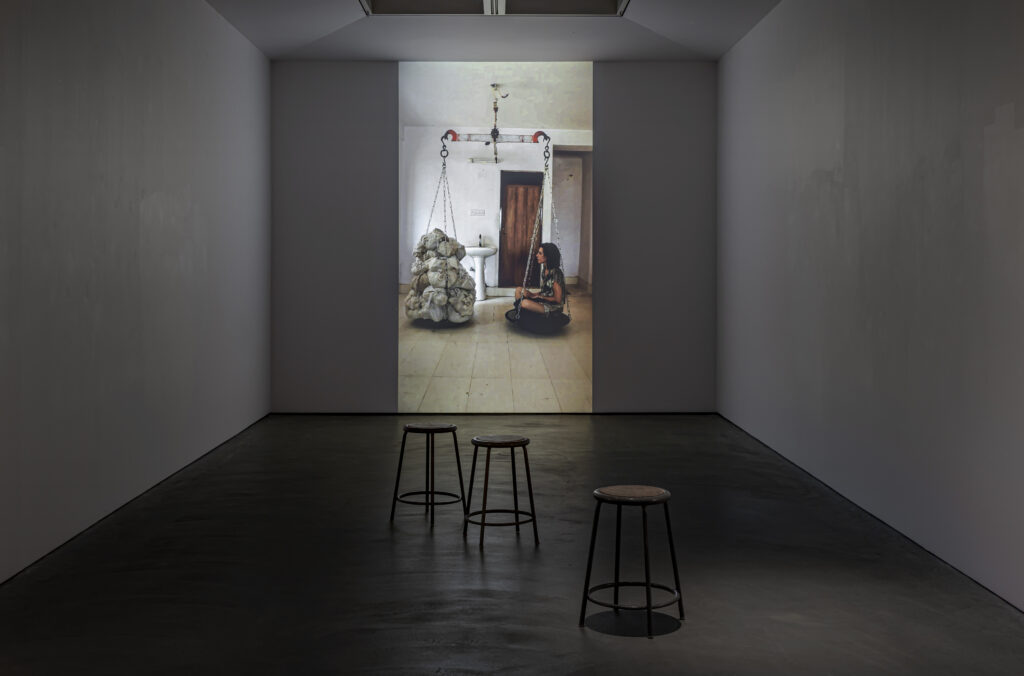
A: I wanted to ask one thing in regard to the title of Scapegoat. How it touched me is that there’s this quote by Andre 3000 that says, “across cultures darker people suffer most. why?” That spoke to me in terms of how marginalized and racialized people, especially Black people, have been the scapegoat for racism, sexism, colourism and the weight has been put on us, shifted to us, and we’re carrying too much. I was wondering if you wanted to speak to the idea of what a scapegoat is from the title.
n: Scapegoat is a collision of secular and religious belief and philosophy. It’s a concentration of Christianity, Judaism, philosophy, ritual and so-called animism. Though a lot of people see religious iconography in my work, I say it’s just the zeitgeist coming through me. I am agnostic. I do not plan the Judeo-Christian mythological character of my work.
How I ended up with the goat in Scapegoat was because while I was photographing the men, I began photographing young women at the petting zoos north of Toronto’s 401 highway. The reason for that was because I was seeking healing activities. Petting zoos are profoundly healing places, holding these baby animals is profoundly comforting. A lot of us urban dwellers have forgotten about the pleasures of handling farm animals. You know, if you go to places in Africa or South Asia for example, to see a little herd of animals such as a herd of goats, cattle, camels hanging about cities is completely normal. In Toronto we’re not allowed to bring farm animals into the city. Some Canadian cities like Montreal are beginning to see value in removing those prohibitions.
But the idea behind Scapegoat was also about ideas around who populates our prisons? Who populates the remand (detention) centers? Who is denied support of the Toronto bail programs? Who are the people who are trying to get out of their home countries and into Canada? It’s a lot of young men. I mean a lot of families, a lot of women, a lot of children, a lot of people, but predominantly young men. The family will invest in the young man. “You go, you lay the groundwork, we follow.” That young man is also at a stage that coincides with an adventurous spirit and an immortality complex where they do extreme sports, they’re easily recruited, so called radicalized. It’s a risk-taking age stage that is taken advantage of by world order.
There is also a vulnerability at work here. The relationship between photographing the men [in Scapegoat] and me, was also very collaborative and special. We disclosed and shared a space of co-knowing. I know they understood what I was going through in the courts because they also shared with me what their lives were. In the studio, we became very connected for being really real with each other. I think this body of work is the most intimate I’ve ever got with my subject. It is a document created as grief, during a grieving period, but also a document of active, living trauma.
A: I’m intrigued to know a little bit more about the bones—they show up cradled within the arms of the individual men in the images and in your video Scales of Justice. What called you to include human bones as a part of Scapegoat?
n: I had been very fascinated with the Google Image search pages as an exhibition venue as a portrait of you, the researcher. Research is an important part of my process. I was looking to better understand my experience of going to foreign places represented by the information sphere, to make sense of the global news industry and how to process reportage of lives lost to conflict. I had been given photos of human remains desiccated by the desert forces, the aftermath of a conflict that occured while I was traveling with the United Nations. 254 people were killed in Kaldak Payam that afternoon in May 2011. I was looking to know more about what the desert does to the human body in death. What the bones looked like in the desert. And oh my gosh, I found this amazing photo, uncredited, which was a couple in full-on embrace, dead together, in each other’s arms, documented as skeletons. You can find it, you can search it. Very powerful. Very powerful.
That same evening when I was researching what bones looked like when left to the desert forces, I found an opportunity to buy an osteological specimen set in Canada. So I eventually bought them. I bought them over three years and over those three years I tried to fundraise to complete the purchase, which I wasn’t able to do. I understand. It’s very sensitive. I have, however, been supported to make this artwork since I completed the acquisition.
I had done all this research about the trade of human remains, in general—whether it was for blood, for skin, or stem cells. Who is selling what? To whom? For what? Now that we have 3D scanning and printing, there are fewer bones in the Western market, but the ones that are out there in the North American and European inventory are coveted and expensive. They come from far away places. When I was researching their origins, I recognised how far away places are working to shut down the international export from their countries but that in Europe and North America, it continued to be legal to import. For decades we have supported a very healthy black market. My first body of work with the bones was called “between here and there.” The title refers to the semantic shift from sacred to product that the remains have undergone between that colonized place, where the bones are harvested, to their arrival in this country. Here the bones are legal commercial product even though their mechanism of arrival was illegal at the point of origin. They are cleaned and laundered by Canadian legal frameworks. I was thinking a lot about how we enable or disable countries from exercising their own dignity of self-determination.
It’s hard work too. As you know, it’s hard work to be pushing against the stream. To say “No.” It’s easy to just go with the current, but you have to constantly be swimming against the stream and say, “No this isn’t good enough.” Because if enough of us do, things will change into what enough of us want things to change into.
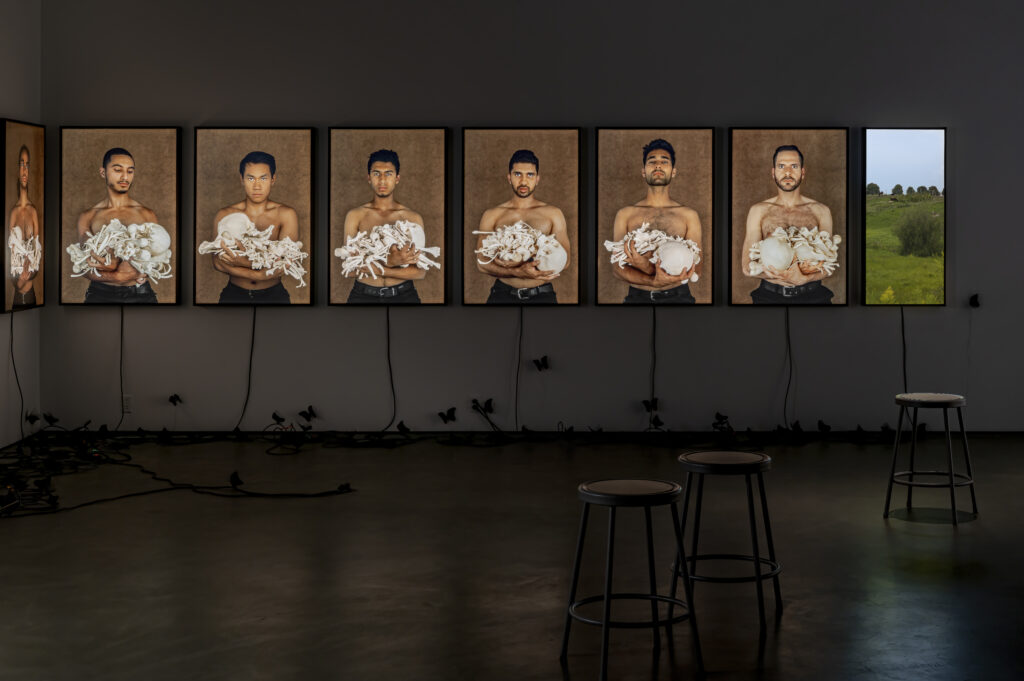
n: And also—grief work is a life cycle of experience. Grief work is healing work, it’s indispensable for us to continue with our Sisyphean feat. We have to do the grief work otherwise we’ll get an overload. One must feel and exercise grief or else you get burnt out and you end up with too much stuff within you.
A: And I think this sort of connects to how radicalisation is a continual process. It’s not just one moment.
n: I feel like there’s a certain scapegoat in our Western cultures that is established to occupy that space so that others don’t have to. I use you to prop myself up. It’s also patriarchal. I’m going to put you down. I’m going to make you feel dumb. I’m going to tease you for your gender or your hairdo or your body size or whatever it is. I’m going to try to keep you down to prop myself up. So I see the scapegoat as being that foundational caste of … let’s call it hierarchy. But who are all those folks holding up the dysfunction of authority, becoming crushed under the weight of the human pyramid?
It’s great that the broader society is starting to talk more globally about decolonization and what that could possibly mean for the evolution of our social systems, but it seems that we’re still having a really hard time talking about race. It’s a taboo conversation that provokes much discomfort –especially so in Canada. We have to break through the taboo to critically engage hierarchy. We can’t have decolonization without critically engaging the power structures. It cannot forever be the bottom up advocating the merits of human diversity. I’m not sure grassroots trickling up can create the necessary systems change. It’s still the powerful few determining who and what of the diversity will be permitted to trickle up. And all the ones down there are the scapegoats; those who are worthy of being the sacrifice, those who are devalued, those deemed disposable, those denied dreams. It’s not bad people. It’s bad systems.
Scapegoat is on view at the M(M)A until March 18, 2022
Header image: an initial aversion to the plight of the sufferer. (Pietà) 2015 – 2022 \ Scapegoat (2022) – 18 backlight photographs, 208 electronic butterflies. copyright nichola feldman-kiss. Photo by Toni Hakfenscheid.
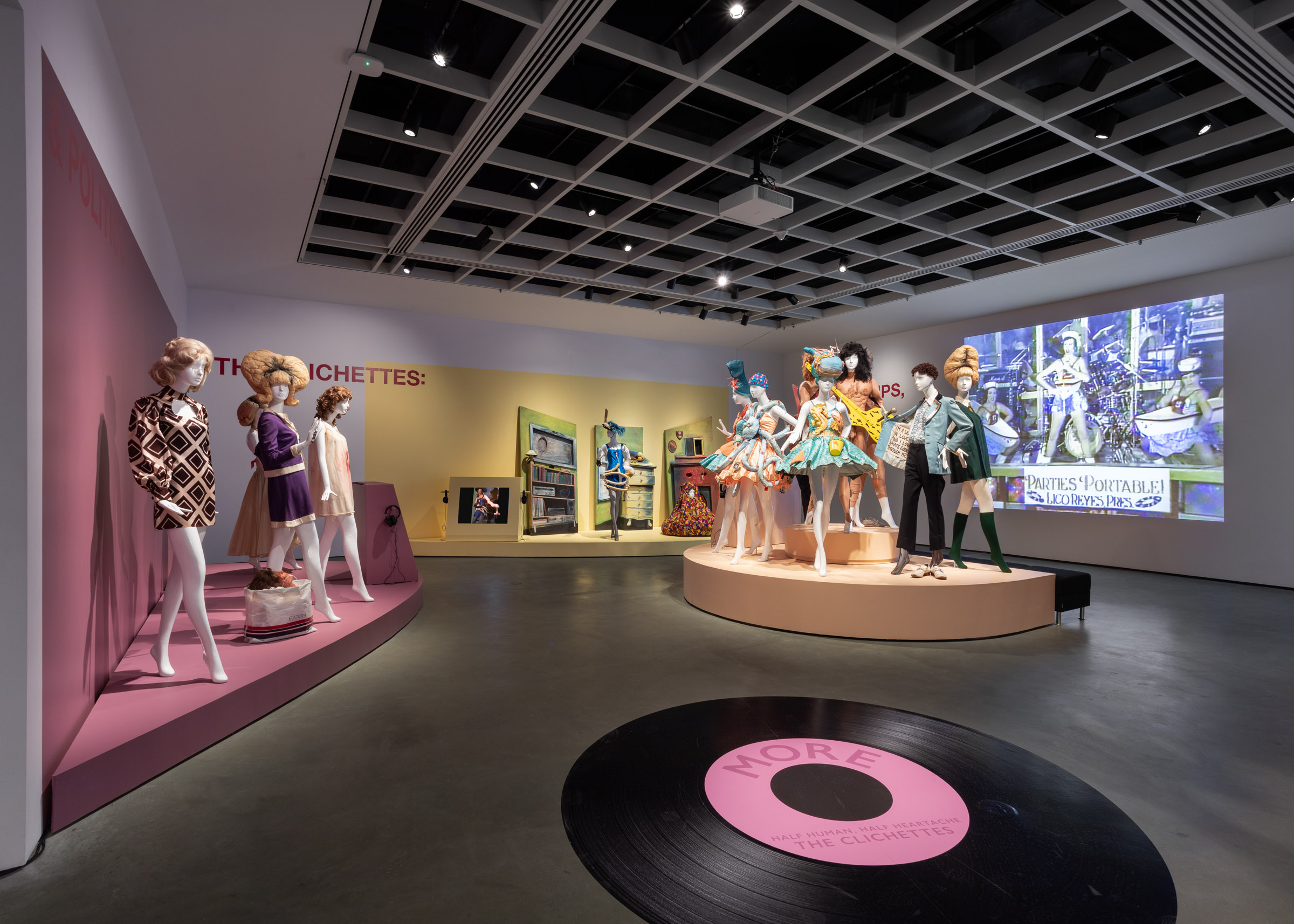
McMaster Museum of Art wins Exhibition of the Year for The Clichettes: Lips, Wigs and Politics
December 2, 2025
On Monday, December 1, 2025, Galeries Ontario / Ontario Galleries (GOG) announced the winners of the 48th Annual GOG Awards and the McMaster Museum of Art (M(M)A) took away the top award for the Exhibition of the Year (Budget Over $50K) for the Fall 2024 exhibition The Clichettes: Lips, Wigs and Politics produced in partnership […]

The Creative Process: Well-being through art with the McMaster Museum of Art
August 22, 2025
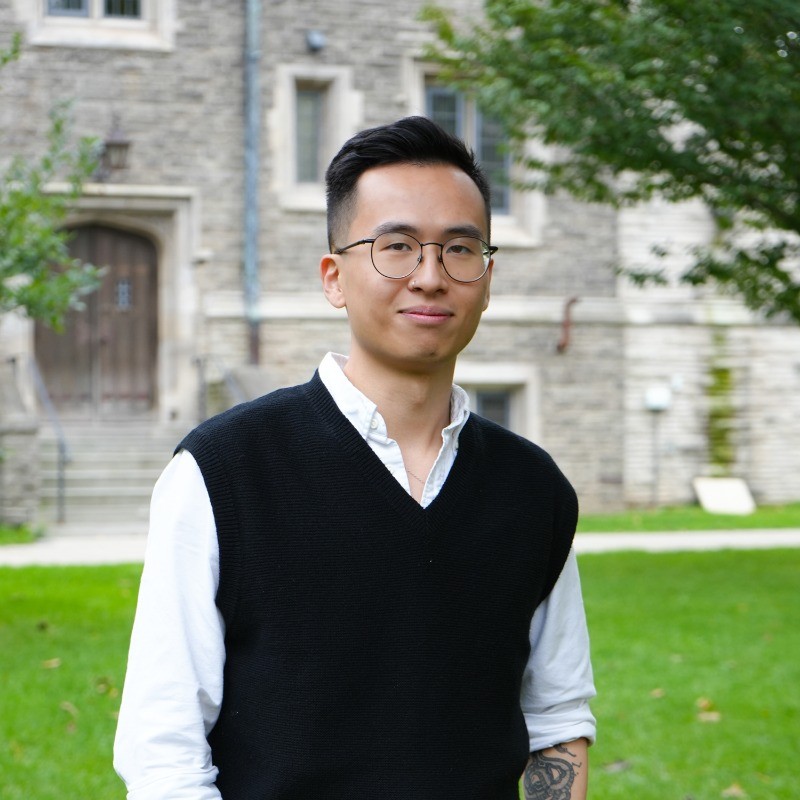
McMaster Museum of Art Welcomes New Communications Officer Jeff Jung Sing Chow
July 11, 2025





